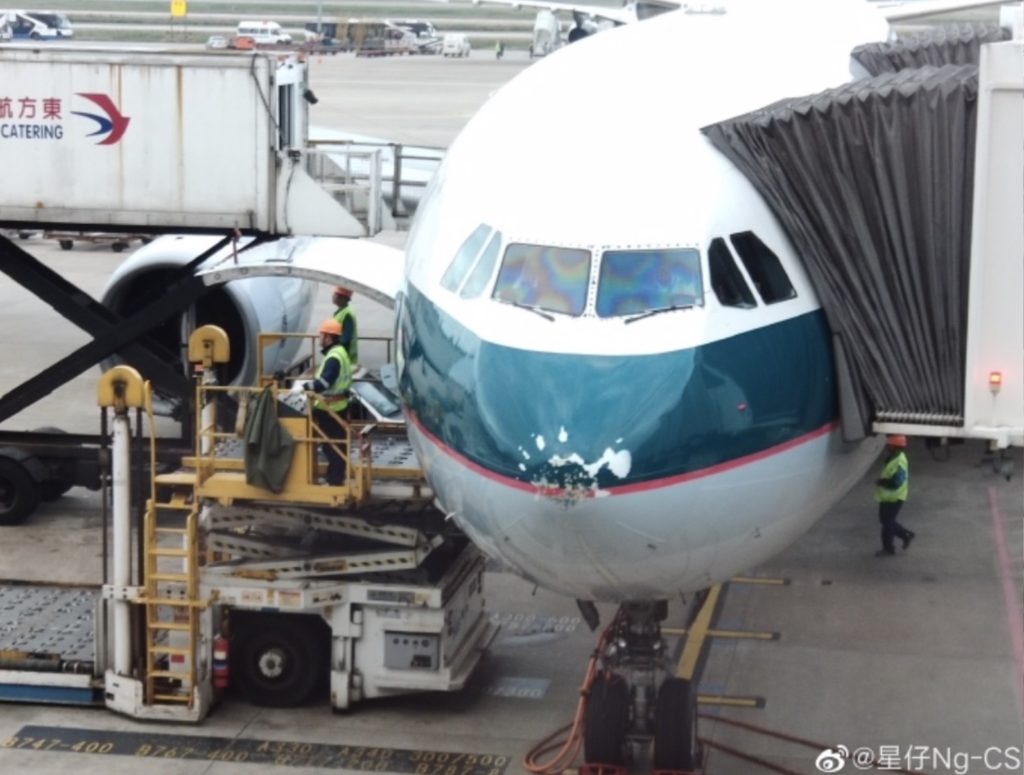Hong Kong’s first “red rainstorm warning” of the year not only plunged the city into darkness and left two dead on Saturday afternoon, it also terrified scores of passengers flying to Shanghai when their plane was battered by turbulence and struck by lightning.
According HK01, Cathay Pacific flight CX360 was due to take off from Hong Kong International Airport at 1:45pm on Saturday, but departure was delayed by about an hour, putting its takeoff time squarely in the middle of the Hong Kong Observatory’s thunderstorm warning window.
https://www.youtube.com/watch?time_continue=5&v=eFeVM_WA4II
Videos and photos posted to the mainland social media site Weibo by a user called Ng Chen-sing show a bolt of lightning strike the wing of the plane, as well as minor damage to the aircraft’s nose after landing.
According to Ng, the plane was rattled by turbulence for a solid 15 minutes as if flew through the storm.
“I felt the plane was going to fall apart!” Ng said in his post.

HK01 reports that the plane, an Airbus 330, is currently undergoing inspections.
Though undoubtedly terrifying, lightning striking airplanes is not uncommon, and is rarely a problem. In recent decades airplane designers have taken great pains to ensure that lightning strikes don’t effect sensitive electronic equipment or, thank God, the aircraft’s fuel tanks, aeronautics expert John Hansman told Time in a recent story on the phenomenon.
The reason modern aircraft are able to pass through lightning safely is that their fuselage functions as a Faraday cage, which distributes electrical current through an exterior conductor — in this case the plane’s body — without affecting the interior of the cage.
Planes struck by lightning are generally inspected after landing, but are usually found not to have been damaged, or to have sustained only minor damage.
The Hong Kong Observatory raised the red rainstorm warning — indicating predicted heavy rainfall — at about 2:20pm on Saturday after a system of thundershowers coalesced around Guangzhou and began intensifying as it moved into to the SAR.
An average of 40 millimeters of rain fell across the territory, with more than 60 millimeters recorded in parts of the New Territories and Lantau Island. Wind speeds at times exceeded 100kph in North Point and Green Island.
The South China Morning Post reports that the intense rainstorm killed one person at sea and another in a lightning strike, and that from 12am to 6pm on Saturday, the Observatory reported a total of 9,938 cloud-to-ground lightning strikes.
The Observatory had reduced its warning from red to amber by about 3:20pm on Saturday, and cancelled all rainstorm warnings at 4:45pm.





